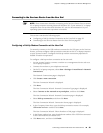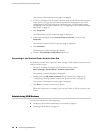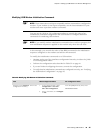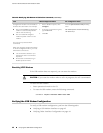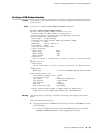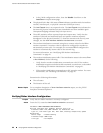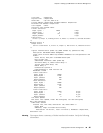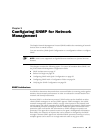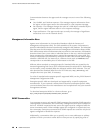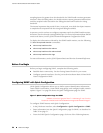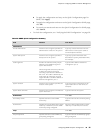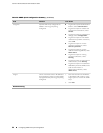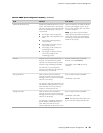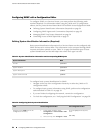
Chapter 3
Configuring SNMP for Network
Management
The Simple Network Management Protocol (SNMP) enables the monitoring of network
devices from a central location.
You can use either J-Web Quick Configuration or a configuration editor to configure
SNMP.
NOTE: SNMP is not supported on Gigabit Ethernet interfaces on J-series Services
Routers.
This chapter contains the following topics. For more information about SNMP, see
the JUNOS Network Management Configuration Guide.
■ SNMP Architecture on page 47
■ Before You Begin on page 50
■ Configuring SNMP with Quick Configuration on page 50
■ Configuring SNMP with a Configuration Editor on page 54
■ Verifying the SNMP Configuration on page 58
SNMP Architecture
Use SNMP to determine where and when a network failure is occurring, and to gather
statistics about network performance in order to evaluate the overall health of the
network and identify bottlenecks.
Because SNMP is a client/server protocol, SNMP nodes can be classified as either
clients (SNMP managers) or servers (SNMP agents). SNMP managers, also called
network management systems (NMSs), occupy central points in the network and
actively query and collect messages from SNMP agents in the network. SNMP agents
are individual processes running on network nodes that gather information for a
particular node and transfer the information to SNMP managers as queries are
processed. The agent also controls access to the agent’s Management Information
Base (MIB), the collection of objects that can be viewed or changed by the SNMP
manager. Because SNMP agents are individual SNMP processes running on a host,
multiple agents can be active on a single network node at any given time.
SNMP Architecture ■ 47



